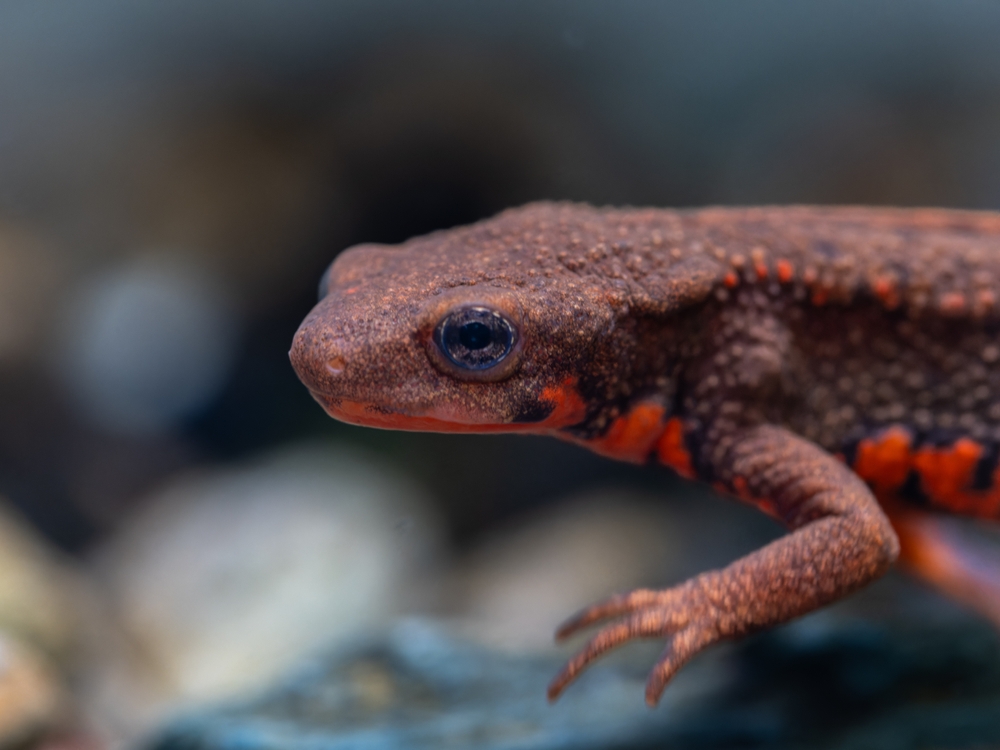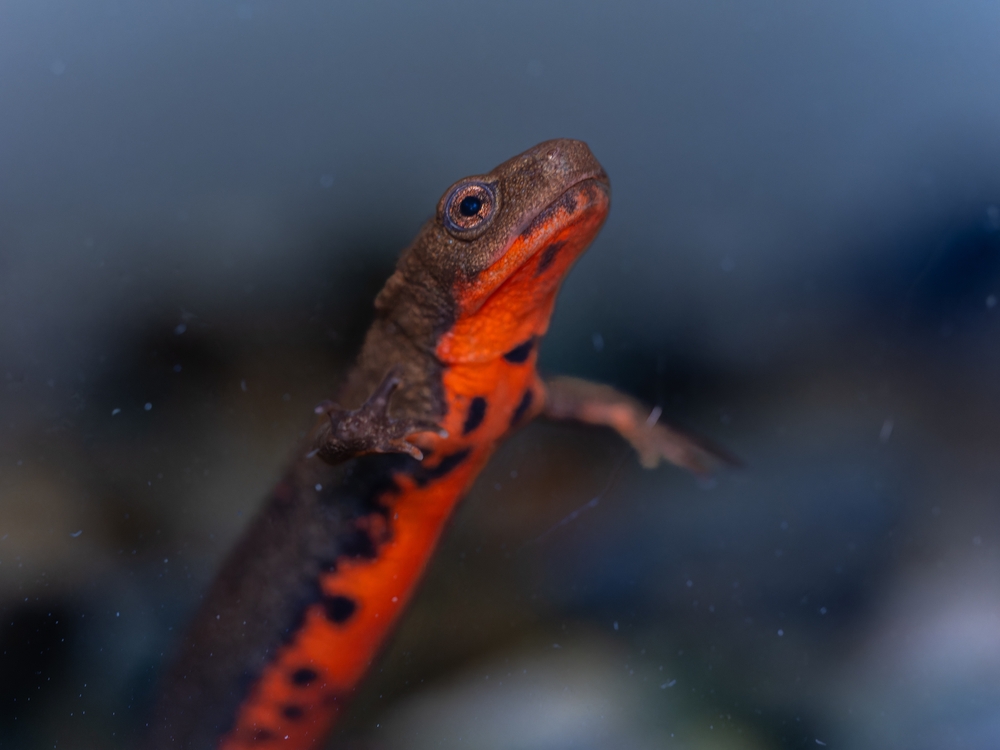The Japanese fire bellied newt (Cynops pyrrhogaster) is a primarily aquatic amphibian found in cool freshwater ponds and streams throughout Honshu, Shikoku and Kyushu in Japan. In the wild, they are poisonous and contain high levels of tetrodotoxin which they build from their diet.
Japanese fire bellied newt husbandry
Fire bellied newts live in surprisingly cool water, making them reasonably unique amphibians to keep. Instead of maintaining amicably warm climatic variables, the keeper should ensure that water temperature doesn’t exceed 20℃. In most homes, this is quite achievable in a water tank, with room temperature water.
Fire bellied newt husbandry should not be underestimated. Their ease of care was perpetuated by the aquatics hobby for years in the early 00s as “cold water” is seemingly straightforward. However, fire-bellied newts should be given access to UVB, a live food diet and a land area with opportunities to burrow and aestivate if needed. Add to this that they can live up to 30 years in captivity and should be hibernated for optimal health and their care becomes more complex than a goldfish.

Fire-bellied newts will breed without hibernation, but the temperate climate of Japan sees cold winters in which most newts will bury into decaying matter to avoid frosts and freezing water. Therefore, some seasonal fluctuation should be provided. “Room temperature” is perfect during spring and summer, but the keeper should consider housing their newts in the coolest room in the house.
Deeper water will allow for cooler temperatures under UV lighting. So, a 60x45x45 fish tank is a good choice during summer, with a paludarium becoming more appropriate in winter. Aquatic prey such as blood worms and brine shrimp should comprise most of the diet, while terrestrial prey like microcrickets, bean weevils and chopped worms can make a refreshing change. The keeper should seize the opportunity to gut load and supplement terrestrial prey where possible.
The water should be clean, and a good quality filter must be used. Although wild Japanese fire bellied newts occupy fast-flowing streams, they are typically isolated to pockets and pools with less current. Therefore, the keeper should avoid filters that create a strong current.
